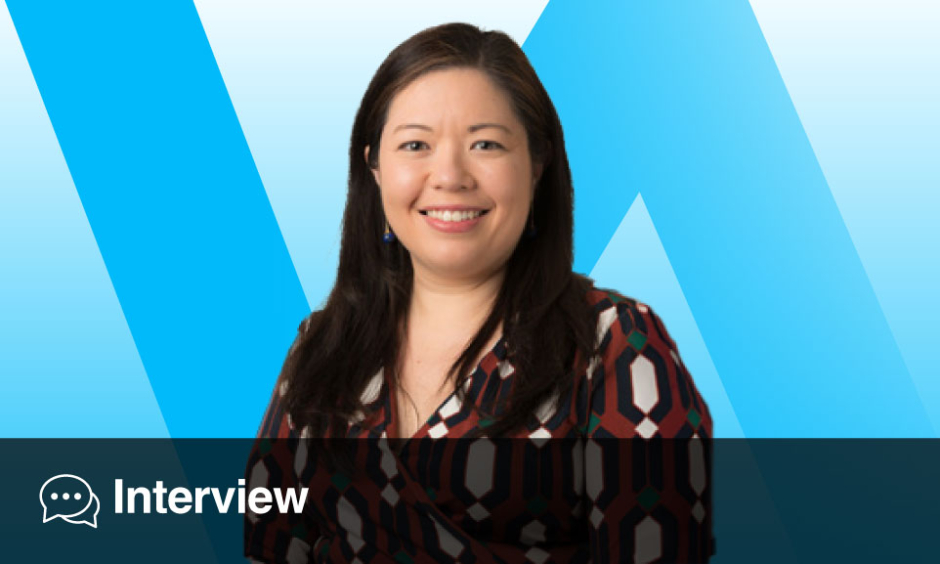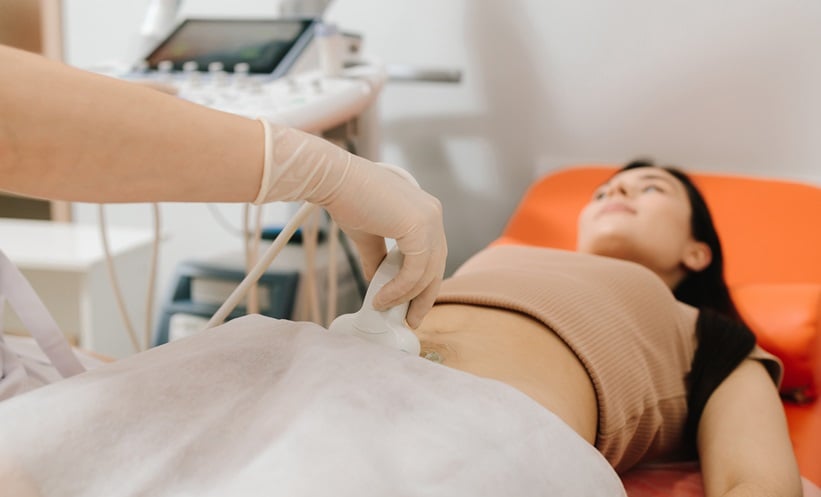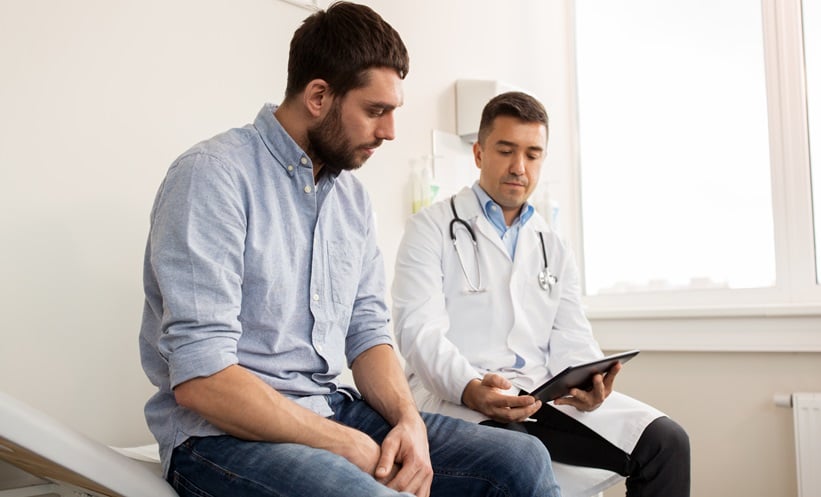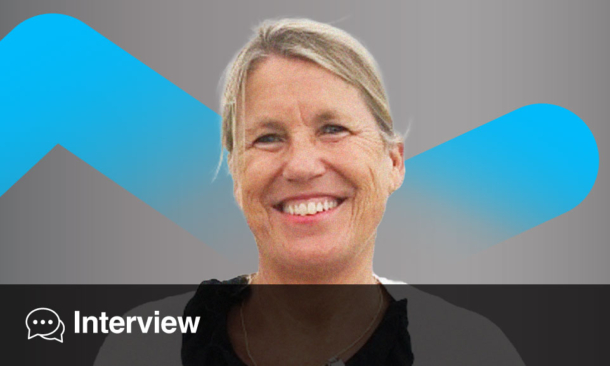Michelle Peate | Principal Research Fellow, Department of Obstetrics, Gynaecology and Newborn Health; Program Leader, Psychosocial Health and Wellbeing Research (emPoWeR) Unit, Department of Obstetrics and Gynaecology, University of Melbourne, Australia
Citation: : EMJ Repro Health. 2025;11[1]:59-62 https://doi.org/10.33590/emjreprohealth/YGHF3903
![]()
Your research has had a major impact on fertility preservation for patients with cancer. What initially drew you to this area of reproductive health?
That’s an interesting question. I came to this work in a somewhat roundabout way. During my undergraduate studies, I majored in genetics, and while I started off interested in that field, I became more drawn to reproductive health in general, specifically around questions of inheritance and how people make reproductive decisions like do you want a baby? Do you not? What drives those decisions?
Although my background was very science-based, it wasn’t until I started working in a psychosocial research group that I became interested in the decision-making aspect. One of my colleagues was doing a PhD focused on women with breast cancer, and asked them about their priorities during treatment, at diagnosis, and afterwards. One thing that stood out was, many women said that no one had told them that their cancer treatment could affect their fertility. They only discovered this later, when they were recovering and trying to return to life as normal.
That had a big impact on me. I was in my 20s at the time and thought, ‘What if that happened to me?’ I always imagined I’d become a mother. So, I felt a lot of empathy, and I realised this wasn’t just about biology. This was about people’s futures, their relationships, and their identities. I thought, ‘we should be able to do something about this’.
That’s when I was invited by my then-supervisor to explore this area for my PhD. From there, I became deeply involved in fertility preservation, not just for patients with cancer, but in a broader context. The goal was simple: to raise awareness that cancer treatment can affect fertility, and ensure that people know what their options are.
I’ll never forget meeting a woman early on in my work who told me that her oncologist dismissed her fertility concerns because she already had two children, even though she was with a new partner, and they had a vision for their future family. She told me, “Yes, I’m worried about surviving, but I’m also thinking about life after cancer.”
At the end of the day, if just one patient tells me that something we did helped them, then it’s all worth it.
Is it common for patients to be unaware that cancer treatments can impact their fertility?
Yes, and why should you know about it unless you have gone through it? At diagnosis, people are overwhelmed. They’re scared. They’re thinking about survival, not fertility. If clinicians don’t bring it up, then patients won’t know to ask.
That is part of the problem. People don’t know what they don’t know, and that means that patients rely heavily on their clinical teams to guide them. However, what gets raised often depends on the clinician’s own biases or assumptions. Our goal has always been to build something into the system so that everyone has the opportunity to be informed.
Some patients don’t care about fertility, and that’s completely valid, but they should at least be offered the chance to talk about it. There is often only a small window; ideally, fertility preservation happens before chemotherapy starts, and no one wants to delay treatment.
Interestingly, we had hope at one point that cancer treatments were becoming less toxic, but now we are seeing more immunotherapy, and we don’t yet know its long-term effects on fertility. Therefore, this work remains critical.
Can you tell us more about your work on developing decision aids for patients? How do these tools change the conversation between patients and clinicians?
Decision aids are tools specifically designed to help people make complex health decisions. These aren’t just general leaflets; they are developed using international standards, and they are grounded in decision science.
They are especially useful in situations where there is no clear ‘right’ or ‘wrong’ choice, like fertility preservation. Whether to preserve fertility or not is a values-based decision. It depends on your personal circumstances, beliefs, financial situation, health, and so many other things.
What decision aids do is walk people through their options in a structured way. They outline the pros and cons, and they include something called ‘values clarification’ exercises. These help people weigh up what’s important to them, including whether they value the chance of a biological child highly and if it’s worth the emotional or financial investment.
Crucially, decision aids are not meant to replace clinicians, but instead are there to enhance those conversations. We want patients to feel more confident, more informed, and more empowered to ask questions. It also supports clinicians, especially in oncology, where they may not feel equipped to talk about fertility, and vice versa for fertility specialists discussing cancer treatment. The aid acts as a bridge between these two worlds.
As everything is standardised and evidence-based, patients get consistent, comprehensive information, and no one is relying on memory or assumptions. That improves the experience for both the patient and the clinician.
How can healthcare systems better integrate fertility preservation into routine cancer care?
There have been some great developments in the past 10–15 years. Most oncology guidelines now recommend discussing fertility with patients, but we need to go further and embed that into actual practice. This means training clinicians, embedding prompts into electronic health records, and creating clear referral pathways.
At the Royal Children’s Hospital in Melbourne, Australia, one of my colleagues built a prompt into the electronic system. It asks, “Have you discussed fertility preservation?” This links directly to relevant guidelines. She also secured funding for an oncofertility care coordinator, someone whose job is to have those conversations. That’s been a game changer.
However, we also need organisational buy-in and, frankly, funding. In Australia, most fertility preservation is private, and that’s a huge barrier. We need equity, not just in financial terms, but also geographic access. People in rural or remote areas still miss out. That really highlights the systemic barriers. We want care to be patient-centred, not dependent on who you happen to see.
One colleague I work with runs a mobile service that brings fertility preservation to different locations, but ideally, we’d have an integrated system that works for everyone.
You have done extensive work on patient decision-making in oncofertility. What are some of the biggest misconceptions patients or clinicians may have?
From patients, the biggest one is, ‘this isn’t important enough to ask about’. Some don’t want to bother their specialist, or they assume that it’s not worth mentioning, but if it’s important to you, then it’s important, full stop.
Another misconception is that fertility preservation guarantees success. That’s not true. Especially in oncology, patients usually only have time for one cycle before treatment. Fertility preservation can improve chances, but it doesn’t guarantee a baby.
From clinicians, the traditional belief was that survival is what matters. While that’s true, we have now seen through research, including from the Dana-Farber Cancer Institute, Boston, Massachusetts, USA, and our work in Australia, that many women would even consider less effective treatment if it meant preserving fertility. That shows how important this is to people.
There’s also sometimes an assumption that patients will make the ‘wrong’ decision, but as one of my gynaecology colleagues says: “Maybe we didn’t give them the right tools or information to make the right decision for them.” I strongly believe in patient autonomy. It’s our job to support them so that they can make the right decision for themselves, whatever that may be.
You have led large studies on reproductive decision-making and support tools. What lessons have emerged about how individuals make decisions about their reproductive futures?
One key lesson is that reproductive decisions are emotional and deeply value-driven. You can have all the knowledge and still choose something that defies logic because of fear, hope, or pressure from family or society.
Traditional measures of ‘informed choice’ focus on knowledge, attitude, and alignment with action, but I think we are missing the emotional dimension. You can have excellent knowledge and even a negative attitude towards fertility preservation, but still choose it because the emotional weight is so strong.
Another thing I have learnt is that patients make better decisions when they feel validated and supported, not rushed or dismissed. That is especially true in cancer, where timelines are tight. Creating space for thoughtful decision-making is essential.
Transparency also matters. In our decision aids, we always include a section on ‘what we know and what we don’t know’. Patients appreciate that. If we are honest about uncertainty, it helps them feel more in control.
What do you see as the next big frontier in reproductive health research?
I think there are several. Menopause and perimenopause are finally getting attention, socially and clinically. I have been working more in that space, particularly around decision-making for treatments like menopausal hormone therapy.
I’m also fascinated by the role of AI. People are already using tools like ChatGPT (OpenAI, San Francisco, California, USA) as informal counsellors, asking whether they should freeze their eggs or start treatment. That raises big questions about trust, accuracy, and the intersection of behavioural science and digital health.
Another emerging area is reproductive decision-making in chronic illness. I am starting a project on fertility and kidney disease. For example, some people with kidney disease are told not to conceive until after a transplant, but they don’t know when that will happen. It creates this awkward time lag that affects family planning.
We are also seeing more interest in patient-centred care and unmet needs work across conditions like endometriosis and autoimmune disease. That is something oncology has led, and I think it’s time that other fields caught up.
Lastly, if you could change one thing in how reproductive health support is delivered, whether in fertility preservation, decision-making, or broader patient care, what would it be?
Equity. Every person, regardless of background or health condition, should have timely, person-centred information to support reproductive decision-making. That means embedding care into the system, not relying on people to know the right questions to ask. When someone faces a situation that may affect fertility, they should be offered clear, relevant, values-based support before the moment passes.
We also need to shift from just treating symptoms to improving overall well-being. I come from a psycho-oncology background, and one of its pioneers, the late Doctor Jimmie Holland, used to say: “We may not be able to fix everything physically, but we can improve the patient’s experience.”
That ethos still guides everything I do. Even if we can’t change the outcome, we can help make it easier to bear.








